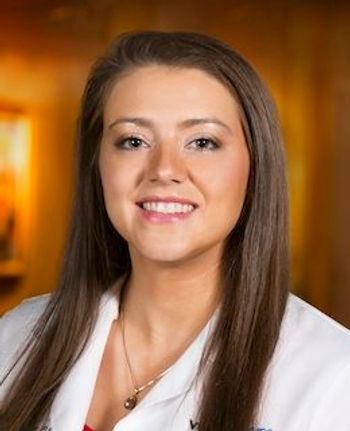
- Vol. 11 No.6
- Volume 11
- Issue 6
Pros and cons of mobile optometry
A doctor shares how taking the clinic to the patients puts ODs in the heart of communities
“The feel of an Apple store but for optometry and on wheels,” is what they told me they wanted.
Patients don’t have time for eye exams in their busy lives, so optometrists must bring the services to them, they said.
I had just finished working two years for an ophthalmologist and, after hustling from 9 to 5 plus working nights and Saturdays, I was ready to hit my patient volume and get that big bonus. The only problem was the office added another doctor, which cut my patient encounters in half-and my bonus disappeared.
I learned then that I needed more control over my career. This is what led me to a strange Craigslist ad about mobile optometry.
I first met with the small team in early spring of 2014: a venture capitalist, an ophthalmologist, and a business entrepreneur.
Suffice it to say, this dream was going to be expensive. We had backing from the venture capitalist’s network, a friendly P.C. with the ophthalmologist, and our business entrepreneur, who was thrown headfirst into everything eye care from credentialing to supplies. I was going to be the face of the new company and help direct the way we practice optometry.
Related:
On the road
Mobile optometry can have many different faces. It can be the screenings for which optometry students volunteer. It can be trips to the nursing homes across the state. It can be volunteer trips to developing countries. It can be home consults in concierge settings. In my case, 35-foot recreational vehicle (RV)-converted-into-an-optometry-office that visits large corporations.
For me, mobile optometry was exciting. In the years since joining a mobile optometry practice, I have learned a great deal more about each of the communities and where there are needs for our services.
The truth is that optometrists practice in a variety of settings, and it can be hard to believe that there is still a lack of service out there. Even in major metropolitan areas, there are pockets of underserved patients.
There are health centers without ODs, many public schools that could benefit from a mobile OD, and, yes, even a sea of healthy adults who simply do not go in for preventative eye care more than once a decade because they are plain lazy or too busy.
Related: The next frontier: Mobile eyecare clinics
Cons
Let’s start with the downsides. The first challenge is the cost-it’s expensive.
Depending on how the mobile clinic is configured, money can be spent or saved. Our company opted for the most expensive way possible.
It cost $250,000-at a minimum-to get the truck outfitted and customized with the newest auto refractor, non-contact tonometer, fundus camera, digital phoropters, and more.
After that, add in the staff: truck staff and headquarters staff. Pay for new employees will be well below average because these mobile clinics were not self-sufficient initially.
Don’t forget rent for headquarters, too.
Plus, there is a huge amount of infrastructure to get the appointment book filled and find new companies at which to see patients. With the reimbursements landscape, mobile optometry clinics need to see a high volume of patients-four to five per hour is typical.
Furthermore, weather can be a monster. Mobile ODs travel to a different “office” each day, and that means dealing with snow, heat, and rain.
Related:
During the winter, it might take two hours for the clinic to warm up past 50°F-which means the fundus camera can’t be used until after 10 a.m., so patients have to return for photos unless they were dilated at their exams. Sometimes, it is so cold that the computers won’t boot up.
In the middle of summer, if the air conditioning isn’t working, the doctor is sweating by the second patient. The rain is a mess on the floors and causes slip and fall challenges. Really though, I just hoped there wasn’t a leak in the roof directly above the new AR/NCT combo unit.
The next complication is traffic-and it’s not always fun. Most mobile RV clinics need to operate in densely populated cities. Cities create traffic patterns and because you are travelling to a different place every day, you may not know the pattern. I drove a clinic myself for over two years. Seven-hour clinic days would turn into 11- or 12-hour days away from the family simply because of the traffic and the driving. There was even an incident when the driver side window blew up because of a defect and sprayed glass all over my face.
In addition, broken equipment will affect your day. I include the Wi-Fi connection with broken equipment because to access patient histories, process payments, and update records into the cloud, an internet connection is 100 percent necessary.
Related: How private equity affects optometry
Aside from this, the truck is bumpy, and there are many potholes on the road. Gears on instruments will be broken, slit lamp prisms misaligned (repairs can cost over $1,000 to fix those prisms), whole display racks of glasses can fall off the wall.
The generator might just stop working, and with no electricity you can’t see patients. Some days the slit lamp will be off the table and on the floor or a laptop will have slid off the counter and cracked the screen on the floor.
There were days where I had to crawl under the RV and manually crank the leveler to raise and lower it just to be able to drive the vehicle. There were days where the other employees would crash into low overhangs, run up on curbs, or simply get sideswiped by other vehicles. To me, driving an RV in the city was no big deal, but for others, it is a daunting task with a steep learning curve.
Continuity of care is a concern but not necessarily a con. The mobile clinic would work to coordinate care at another office, but it never had its own home office to keep patients in house. We would detect and refer.
I managed to identify two ocular melanomas in my first year. There were many cases with various retinopathy, glaucoma, cataracts, and more. As the doctor, you are able to get the patient the help he needs and drive the point home about the importance of yearly monitoring, but you don’t get to handle the follow-up care and treatment in the majority of cases.
Related: Why patients are choosing eyecare apps over youPros
The patient base is pleasant. Patients usually pre-filled out health history and insurance information.
Timing works differently at a mobile clinic. Seeing the employees of major client means that everyone has the same benefit, so there is less delay on the delivery end. Patients were also trained to be on time. They were turned away if they were two minutes past their scheduled time.
It is nice to have the machination down to a science. When it works, it works really well. Mobile ODs have the opportunity to help more people due to the patient volume, and as mentioned in the cons sections, they will catch previously undiagnosed disease. The patient base is on the whole very healthy, so not many curveballs are thrown during the day. The mobile OD receives reports back regarding all patients who were referred to other clinics for follow-up care.
Related: Wow patients with good impressions and positive interactions
Gratification and recognition are great. The patients are very grateful for services. People are motivated in different ways, but recognition is a powerful factor in happiness-at least in my experience. The ones who are ungrateful (because you can’t make everyone happy) are not even an afterthought. The patients are typically working professionals who are happy that you are here to help.
I remember, shortly before I left, seeing one of my very first mobile patients for the fifth routine exam in just four short years (8/14, 7/15, 7/16, 6/17, 5/18). I also referred her young children to a local eye doctor and hear about them and the glasses they got because I was able to educate her on the importance of exams for children.
Schedule and holiday time are a bonus. The important thing to remember about seeing people at work is that when they get vacation, you do, too. Most major employers observe major staffing dips at all holiday times, and don’t forget summer hours with slow Fridays. I was given great deal of vacation time and regularly took off from December 21 through January 3, along with the plethora of three- and four-day weekends throughout the year.
There are also those days when the generator goes out, so you get to go home. The owners of the mobile clinic don’t like when this happens, but it is a nice perk for the employees. There are also snow days, and sometimes a bridge collapses so you can’t work that week due to traffic.1Related: How to overcome the challenges of practice transitions
Moving on
I enjoyed working in a mobile optometry clinic, and I left because of salary.
I had asked for a 10 percent raise to bring my base up from $100K to $110K, which was still below market value in Boston. My employers countered with a 2 percent raise. Coincidentally, two employers who I had contacted three years prior about part-time work to supplement the growth of the mobile clinc got in touch with me within 48 hours of my salary review. They offered me $145K and $150K.
I accepted an offer with a prison at $150K because of the flexibility and salary. I worked only three days a week earning more than I made working five days at the mobile clinic. I used my extra days to help the clinic transition as they searched for my replacement. That search ended up taking 10 months.
I also worked for another mobile clinic, a direct competitor. That clinic used less equipment but brought it inside the businesses it serviced. That model worked well; however, the user interface was different, and the open settings seemed impersonal. Patients seemed to like that mobile clinic model as much or more simply because they didn’t have to go outside.
This model sold more pairs of glasses because patients would bring co-workers to help them choose frames and the comfort of the building allowed for more space to walk around and talk then in the much smaller converted RV clinic.
References:
1. Interstate 85 bridge collapse. Wikipedia. Available at: https://en.wikipedia.org/wiki/Interstate_85_bridge_collapse. Accessed 5/23/19.
Articles in this issue
over 6 years ago
How artificial intelligence is changing the future of optometryover 6 years ago
I just graduated from optometry school…now what?over 6 years ago
Zoom out to expand treatment for diabetes patientsover 6 years ago
Vision loss diagnosis presents potential complicationsover 6 years ago
3 mental heath conditions to watch for in patientsover 6 years ago
Case report: Don’t be misled by diabetic retinopathyover 6 years ago
Why ODs shouldn’t stop short with patient careover 6 years ago
Everyone tries to figure out health careover 6 years ago
How to overcome the challenges of practice transitionsNewsletter
Want more insights like this? Subscribe to Optometry Times and get clinical pearls and practice tips delivered straight to your inbox.


















































.png)


